- Mark Weddle
- Albums and Singles
- Mark Weddle
- Albums and Singles
samples:
- Rhythm Sound - No Partial
- The Wailers Band - Higher Field Marshall
- The Wailers Band - (dub)
Read More
- Jonathan Dean
- Albums and Singles
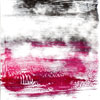
Then, all at once, the package arrives, like an enormously belatedX-Mas present. You hold your breath as you tear open the package withthe trademark Threshold House stamp affixed to it. Inside: a plasticsleeve housing the white cardboard slipcase the CD-R is housed in. Onthe outside of the package, thick mottled paint forms abstractpatterns. Bright colored splotches and dark, veiny paint traces coverits surface. Each sleeve is an original artwork created by Coil. Insideeach sleeve is a poloroid taken during Coil's Winter Solstice musickritual. Yours probably contains a sunrise, a plastic reindeer, a churchsteeple, electrical high-wires, or maybe even a UFO...who knows? Eachcopy has a different name; mine is called 'It Dries Up Everything ItComes Across." Maybe yours is called "Harry Potter's First Dose of LSD"or "Marrakech Mouthfuls." So far, so good...
The CD-R is completely blank, no art or track names printed; justtranslucent iridescent plastic. Track one begins: your fear and anguishimmediately subside with the rise of warm, attenuated bell tones. Thissixteen-minute ambient track sounds like wind chimes slowed down amodulated for maximum pleasurable drone. Then suddenly, Jhon Balancedarkly intones: "You look on it with a sense of dread." His voiceshifts positions and replies: "Gazing upon it with a sense of dread."Then the bell tones are drawn out for an eternity, it seems, whileBalance weaves his beautiful and disarming monologue about ediblebirds. The second track begins with profoundly haunting orchestralsynthesizer drones overlapping as Balance dramatically interprets amystical/existential poem by Angus MacLise. Incredibly haunting. Trackthree is all instrumental, with some playfully cosmic vintage synthmelodies, reminiscent of Kraftwerk's "Spacelab." This track develops ina complex, kaleidoscopic way towards its ghostly conclusion.
Bottom line: Coil has not disappointed in the slightest with thisrelease. They continue to reward their devoted listeners with some ofthe most innovative and inspiring electronic experimental music beingmade today. This CD-R is worth the money and the wait. Coil is veryaware that the total exclusivity of projects such as these adds anextra, "occult" esotericism to the experience that makes the musickthat much more amazing. Bravo.
Read More
- Nate Smith
- Albums and Singles
- Carter Adams
- Albums and Singles
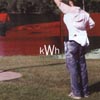
Anchoredby the Ben Lord's bombastic drumming, the band gives every elementequal weight in the mix, tothe extent that the vocals become lost in the mix. While this couldprove to be a deathkissfor some bands, Kilowatthours have consciously decided to place thelyrics on the same levelas the music. Becuase of this, I refuse to call the band's sound 'emo,'although this label isoften applied (mostly due to the fact that one of the members of theband was formerly inElliot). The instrumentation, which includes piano, organ, and variouselectronics to the morestandard guitar, drums, and bass, allows the band to experiment andpush the boundaries of the music's space and depth. The beauty of "TheBright Side" liesin its ability to meld influences from a variety of bands (differentparts of the album remindof bands from Radiohead to Lali Puna to Console) into a cohesive andseamless album. "TheBright Side" is one of the first great albums of this year, each songamazing me with itselectrifying depth, its energy, and its sheer dynamics.
samples:
Read More
- Graeme Rowland
- Albums and Singles
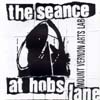
Opening with the 'Fog Detonator' sounding like ashort field recording of doomed chickens lte loose on a minefield, it'simmediately clear that this is going to be a bumpy ride. Thesecond track is a Coil mix / collaboration in homage to'Hobgoblins'. John Balance asked Mount Vernon Arts Lab to contribute toan as yet unreleased compilation (possibly the elusive "Star ShapedIndividual in Society"?) and in return Coil did this remix, ameandering quirky snakecharmer gothic synth melody over a simplemedieval squelching pulsebeat. At first it seemed quite slight but grewinto a more monstrous merry-go-round pervride as day became night. It'salso one of the two most conventionally tuneful tracks here. It'snot surprising that John Balance should like the Arts Lab, as anearlier release "Warminster" in cahoots with Portishead's Adrian Utleyactually sounded surprisingly reminiscent of Coil, and at the time Iwas playing it a lot followed by the elpH 20 to 2000' CD which itseemed to compliment very well. There's an excerpt from "Warminster" onhere, although I'm not sure why. Maybe the original's deleted now andit was too good to leave behind?
There's also a collaboration with Barry 7 of Add N to X on 'TheSubmariners Song', which is an eerie moonlit descent to the bubblingdepths of synth burble. It's a shame it's so short as the oxygen supplygets cut just as the vessel's penetrated the murky unexplored depths ofthe oceanic abyss.'The Mandrake Club' pitches Norman Blake's guitar playing into far moretempestuous expanses than Teenage Fanclub could envisage in AlexChilton's worst hungover nightmare. It sounds like heavy effects boxshenanigens slung over a stylus stuck in a run out groove. Maybe theyjust found the most interesting noise on a Teenage Fanclub record...There is also a member of twee popsters Belle & Sebastien involvedbut there's no need to leap off the nearest roof as it's not thesinger. Isobel Campbell's descending cello runs are showcased alongsidesome erratic harpsichord fills on 'The Black Drop'. This ode to theVictorian slang for opium brings fitting respite from the storm ragingaround it and seems to give the CD a structure like a tarnishedalternate universe reflection of Coil's first "Unnatural History"compilation. Cut to 'Sir Keith at Lambeth' presiding over a furiouslyimmolating satanic mindbrain noise generator, which continues it'sturbulent thrum 'While London Sleeps'. When the Arts Lab adds Coil to Xthere's Hell and Sebastian in Mean Rage Bang Pub!
'Dashwood's Reverie' is an earlier spot of bother, radar blipsindicating giant vampire lizards crawling up the beach by night. Theinfluence of the BBC Radiophonic Workshop's groundbreaking soundtracksfor 'Dr Who' certainly pokes through on this eerie soiree! It'dbe very surprising if Mt Vernon hasn't heard and been heavilyinfluenced by the stunning Evan Parker Disinformation collaboration'London's Overthrow' that opened the second Ash Internationalcollection of Disinformation remixes "Al-Jabr". Evan Parker improvisedsome stellar sax over a repeating bludgeoning VLF radio recording. MtVernon must've thought it was a great idea because he pulls off a verysimilar trick on two tracks here, with Raymond MacDonald improvisingsax over thudding electronic noises. There's no techhead breakdown ofwhich device made what noise, so whether this is actually atmosphericelectromagnetic radio storms just like Disinformation or severelydistorted analog synthing remains a mystery, but Mullholland hasrevealed in interview that his gadgets are Moogs, a Synth VCS3, atheremin and a custom built Turbine Generator. Hats off to monocledmutineer 'Percy Topliss'! The tribute to the officer impersonator wholed an uprising against WWI insanity gets an emergency siren synthblast for the sax to wail over on full red alert. Raymond has a goodbash at Percy, however neither he nor the spookier 'Vauxhall Labyrinth'approach the intensity of Evan Parker, but what does?
Read More
- Rob Devlin
- Albums and Singles
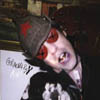
Now, almost twenty years after TheReplacements left Twin Tone and 11 years after they broke up, Vagrantannounced they had signed Paul Westerberg, and that his first solorelease on the label, "Stereo," would include this CD, "Mono," byWesterberg's alter-ego, Grandpaboy. They also claimed they could notconfirm the latest rumor, that Westerberg had recorded the album withsome or all of his former bandmates. Rabid fans demanded answers, somuch that it seems Vagrant decided to release the CD on its own in alimited pressing. So, are the Replacements recording again under thename Grandpaboy? Westerberg and his new label aren't saying, as allplayers listed in the liner notes are pseudonyms. But it's hard to denyon hearing the release that they may be there sporadically on sometracks. Here and there, the bass/backup vocals sound like TommyStinson, the drums could be Chris Mars or a reasonable substitute (JoshFreese, anyone?), and that "Superfluous Lead Guitar," as the linernotes say, might be Slim Dunlap. But who can say? And does it matter?Not really. True to its title, "Mono" was recorded in "Dynamic Mono,"which sounds far better than any other Mono recording I've heard. Andit is easily the best record Westerberg has recorded since the heydayof the 'Mats. A straight rock record in the best sense, there are noslow piano meanderings or ballads here. There are a few mid-temponumbers, bust mostly it swaggers right along. And there are missteps,as Grandpaboy admits in the liner notes, like songs starting or endingawkwardly, and a few weird passages, notably the break in the middle of'AAA.' The songs are worthy of merit, however, as they possess solidhooks, quirky lyrics, and that Westerberg wail, all true to 'Mats form.Who played it? Who cares. As the Grandpaboy says, "It feels right." Andthat's all that matters.
samples:
Read More
- Jessica Tibbits
- Albums and Singles

The label changeover becomes most obvious with 'Glissceule''s lack ofthe striking artwork which graced the covers of the band's first tworecords, 'Bloweyelashwish' and 'Xuvetyn'. Musically much in the samevein as some of Darla's Bliss-Out series releases, the 17 tracks(spanning just over 77 minutes) have an airy, meditative quality andnot as much dirge as the album's predecessors. As a result,'Glissceule', though no less enchanting, is somewhat less dynamic(although it manages to avoid lapsing into homogeneity). In any case,Cortez's emotive, delicate, blanketed layers of guitar andArpin-Henry's soft, unintelligible siren vocals, electronicallymanipulated to the point of absolute unearthlieness, are still present.This is the first Lovesliescrushing release to utilize digitalprocessing (although the album was recorded using analogue means). Theeffect this has on 'Glissceule' seems to be that of an overallsmoothness in production that is not as evident in the band's previouswork. I am at a loss to explain why I so often see Lovesliescrushingget lumped along with other "shoegaze" bands, as they have always mademe think of what Main might sound like if they had a vocalist and putout a record on 4AD in 1985. As for 'Glissceule', it is not likely todisappoint the band's longtime fans, and will surely make some newones.
samples:
Read More
- Terry Goughey
- Albums and Singles
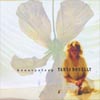
"Life is but a dream" deftly turns mum-rock cliches into aseries of spooky metaphors that flit in and out of earshot over alooped heart-beat and barely-there guitars—a million miles away from"Feed the Tree". The single "The Storm" sounds like Patsy Cline crooning with Lambchop -it is, in fact, the weakest song here. "Moonbeam Monkey" seems to holdthe key to the album's heart: featuring the ghostly, disembodiedvocal's of Morphine's Mark Sandman—it segues directly into a recordingof her daughter playing a toy piano, succintly connecting life anddeath, loss and love, creating an aura of dazzled, but far from docile,satisfaction. Then she rocks out on "Wrap-around Skirt" and yourealise how watered-down Alanis, Tori and Dido actually are. Its justa shame we had to wait almost ten years for this (its been 10 yearssince TM's "The Real Ramona"!). Tanya might not have thesame contorted dynamics or righteous fury as Kristin Hersh, but she'sfound her voice and has proved herself to be just as valid andneccessary as her wayward half-sister.
Read More
- Administrator
- Albums and Singles
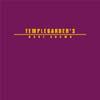
The first track on the album, "Lure," sets the stage: percussive drumming that slowly increases in volume, the repetitive chanting of a monk (I'm a sucker for that), and deep, engaging atmospherics. A couple tracks are a little dull (that is, the ones that aren't as "ritualistic") but the good points more than make up for it. In fact, the album kinda leaves me wishing that more of the tracks were those wonderful ritual-drumming ones... but hey, I guess a balanace is nice. Definitely a worthy purchase for those into this style of music, and something you might want to give a try if you've never heard anything like it before.
samples:
Read More
- Nate Smith
- Albums and Singles

This CD ispart of the Thirsty Ear "Blue Series," which Shipp curates, and theband is primarily made up of the regular crowd - Shipp on piano,William Parker on bass, Daniel Carter on reeds, and Guillermo E. Brownon drums. Also on board is co-producer FLAM on "synths andprogramming." The styles on the album run the jazz gamut, from thefusion funk of "Space Shipp" (there's also a "Rocket Shipp," howclever) to the 'I'm-gonna-sound-like-Monk' solo piano piece "ZX-1" tothe quiet moody jazz of the Carter/Parker duet "X-Ray." Everybody knowsthat Shipp and co. are all incredible instrumentalists, so of coursethese guys can play these pieces and make it work. But at their best,these songs sound like a pretty good house band at a hip lounge. Attheir worst, they sound like circa-1993 attempts at jazz-hop (though inShipp's defense, at least he didn't go so far as to hire a guestrapper). We are made to think that the presence of FLAM (yes, it'salways in all caps for some reason) on "programming" is going to takethese earlier idioms of jazz to some sort of new horizon (hence thetitle 'Nu-Bop'), but his contributions mostly add up to a bunch ofquirky squeaks and crunches mixed in with Brown's drumming. The mostridiculous FLAM contribution is "Select Mode 1," in which Shipp'splaying is looped over a cheesy dance beat for a minute and a half. Themost interesting part of the disc is the phasing between Shipp andBrown at the beginning of "Select Mode 2," ironically. This disc hasbeen widely praised recently, and I'm not sure why. It may be thatpeople think that if Shipp and co. made a more traditional album thenit must be good, considering their status as gods in the jazz worldtoday, but it's really not a very interesting listen and definitely nota high point for any of the musicians involved.
samples:
Read More